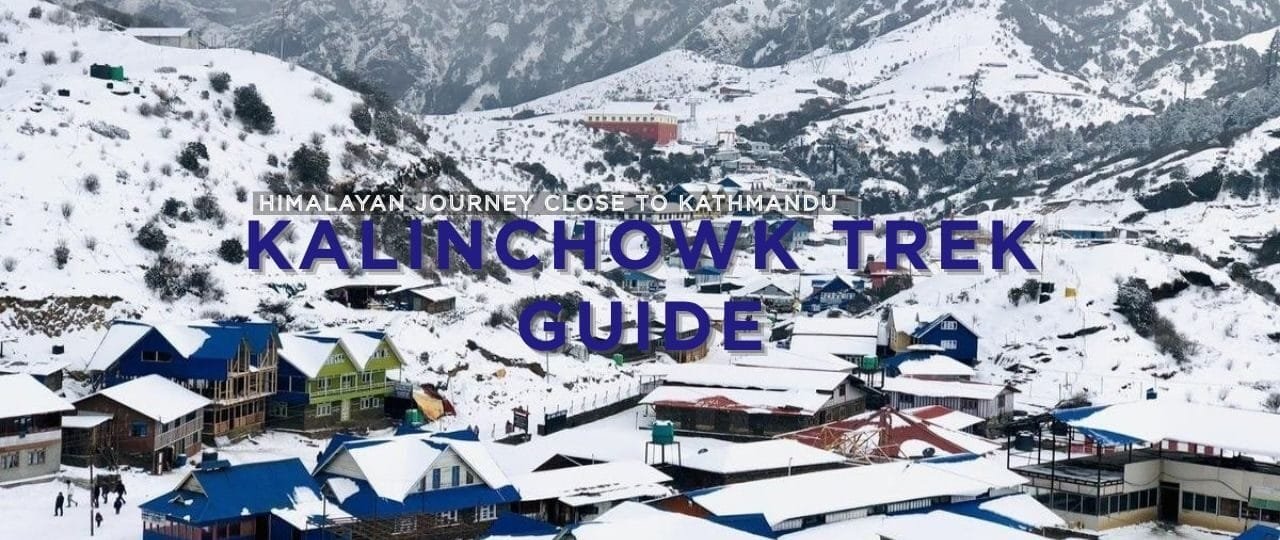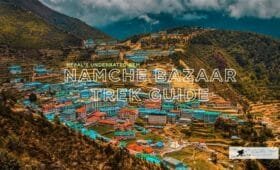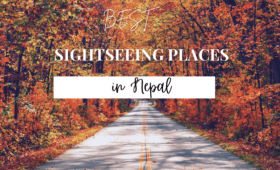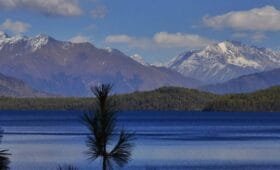The Kalinchowk Trek is rapidly gaining recognition among short yet captivating treks in Nepal. Situated in the Dolakha District, just a few hours’ drive from Kathmandu, Kalinchowk Trek merges scenic ridges with a revered temple perched on a mountaintop, delivering a cultural and natural experience unparalleled so close to the capital. You’ll encounter panoramic Himalayan vistas of the Gaurishankar, Langtang, and Annapurna ranges, all while exploring the region’s spiritual energy, culminating at the iconic Kalinchowk Bhagwati shrine. For many trekkers seeking a moderate adventure near Kathmandu, the Kalinchowk Trek is an accessible weekend getaway and a meaningful cultural immersion.
In this extensive Kalinchowk Trek Guide article, we will explore every dimension of the Kalinchowk Trek: from the recommended Kalinchowk Trek Itinerary and average Kalinchowk Trek Cost to route details, difficulty, best times to go, plus how you can add a philanthropic twist through Volunteers Initiative Nepal (ViN). Whether you’re a newbie looking for a short but scenic route or an experienced trekker scouting for a lesser-known gem, the Kalinchowk Trek provides a remarkable blend of wilderness, vistas, and local heritage.
Introduction
1. Introduction: Why the Kalinchowk Trek?
Kalinchowk Trek draws in travelers who want spectacular Himalayan scenery without venturing deep into far-flung areas like Everest or Annapurna. Its proximity to Kathmandu (roughly 132 kilometers away) means you can accomplish the trek in just a few days. But don’t be fooled by the short schedule—Kalinchowk Trek packs a punch: steep ridgelines, lush forests, and a revered temple near 3,800 meters.
Statistic: According to tourism data from the Dolakha region, the number of domestic and foreign visitors to Kalinchowk has been rising steadily—over 50,000 per year, predominantly from Nepal. International trekkers are also discovering the route’s hidden allure. Meanwhile, the local population—primarily of Tamang and Brahmin-Chhetri heritage—benefits from the tourism boom, offering teahouse lodgings, cultural homestays, and guiding services.
“The Kalinchowk Trek felt like a microcosm of Nepal—temples, mesmerizing Himalayan views, and friendly villagers—yet it was only a few hours away from Kathmandu. Perfect for a short getaway,”
says Priya, a 27-year-old trekker from India.
History
2. Historical & Cultural Highlights of the Kalinchowk Region
The Kalinchowk area rests within the Gaurishankar Conservation Area, featuring subtropical forests below 2,000 meters and alpine shrubs above 3,000 meters. The region holds profound spiritual importance due to Kalinchowk Bhagwati Temple, a shrine to Kali (a Hindu goddess) perched near the apex of the Kalinchowk Trek Route. Pilgrims from Nepal flock here year-round, especially during festivities or seeking blessings for health, fertility, and fortune.
Local Tamang and Brahmin-Chhetri communities revolve around agriculture and seasonal tourism. The name “Kalinchowk” references the black statue (Kali) worshipped at the mountaintop shrine, integrated with animist and shamanic practices that have coexisted in these highland enclaves for centuries. By trekking up to the vantage ridge, visitors merge pilgrimage with panoramic Himalayan sightseeing—an enchanting synergy unique to the Kalinchowk Trek.
Trek Itinerary
3. The Kalinchowk Trek Itinerary
The Kalinchowk Trek Itinerary typically fits within 2–3 trekking days plus transport. Below is a broad 3-day schedule from Kathmandu:
- Day 1: Drive Kathmandu → Charikot (~1,550m)
- Early morning ~4–5 hour jeep or bus ride to Charikot, the district HQ of Dolakha. Overnight in a local lodge.
- Day 2: Charikot → Kuri Village (~3,200m)
- It is a 2-hour jeep ride or partial trek up winding roads to Kuri Village. Some choose to walk the route from Deurali if they seek extra challenge. Kuri rests in a scenic bowl overshadowed by pine forests.
- Day 3: Kuri Village → Kalinchowk Temple (~3,800m) → Return to Kuri → Drive to Kathmandu
- Wake pre-dawn for the final ~1–2 hour ascent to Kalinchowk Bhagwati Temple. After worshiping or photographing the 360-degree Himalayan panorama, descend to Kuri, then drive back to Charikot and Kathmandu.
Kalinchowk Trek Duration can expand if you prefer more walking than off-road vehicles. Some begin trekking directly from Charikot or a lower point, taking an extra day to reach Kuri. Others do it in 2 days if pressed for time.
Trek Costing
4. The Kalinchowk Trek Cost
Kalinchowk Trek Cost is modest compared to multi-day Annapurna or Everest expeditions. Key aspects:
- Transport
- Bus from Kathmandu to Charikot (~USD 5–10). A private jeep might cost ~USD 100–120 each way, shareable among groups.
- Some prefer jeeps from Charikot to Kuri if skipping the trek portion (~USD 15–30, depending on group size).
- Accommodation
- In Charikot: Basic hotels, ~USD 10–20 per room.
- In Kuri Village, the Teahouse-lodge charges ~USD 5–15 for a shared room, plus additional costs for hot showers, Wi-Fi, etc.
- Meals
- Dal Bhat, or typical local cuisine ~ costs USD 3–5 per meal. Western items cost more (~USD 5–8).
- Permits
- Typically, no official “Kalinchowk trek permits” are required beyond local taxes or municipality fees (~NPR 50–100), if any. Check the latest updates.
- Guide
- A Kalinchowk Trek Guide is optional and USD 20–25/day. The path is usually straightforward.
- Misc
- Pay for donations at the temple if you wish—minimal extra fees for local events or additional stops.
Hence, a 2–3 day trek might cost ~USD 80–150 if going basic. A Kalinchowk Trek Package from an agency, including transport, lodging, partial meals, and a guide, might be ~USD 150–300, depending on group size and comfort preferences.
Trek Map
5. Mapping Your Route: Kalinchowk Trek Map
A simplified Kalinchowk Trek Map covers:
- Kathmandu (1,400m): Starting city.
- Charikot (1,550m): Road-accessible main town.
- Kuri Village (~3,200m): Key overnight point at the foot of Kalinchowk Bhagwati Temple.
- Kalinchowk Bhagwati (~3,800m) is the final vantage point, offering sweeping Himalayan views and a revered shrine.
Kalinchowk Trek Distance can be 5–10 km if you only trek from Kuri to Kalinchowk and back. A longer route from Charikot or Deurali might add 10–15 km more. The scenic ridge approach near Kuri is well-defined, though steep. Some travelers incorporate off-road jeep rides to skip certain walking sections.
Trek Difficulty
6. Kalinchowk Trek Difficulty: Assessing the Physical Demands
Kalinchowk Trek Difficulty ranks as easy to moderate. Highlights:
- Altitude: Max ~3,800m at Kalinchowk Temple. This could pose mild altitude concerns for novices. A gradual approach helps.
- Steep Ascents: The final 1–2 hours from Kuri to the temple is steep. In winter, snow or ice can complicate it.
- Short Duration: Typically 2–3 trekking days. This brevity reduces fatigue.
- Weather: Fog or snow might hamper the final stretch in winter. Slippery trails or minimal signage can challenge absolute beginners.
Those with essential fitness typically handle the route quickly. If you’re new to altitude, proceed slowly, especially from Kuri to the summit. Some novices might experience mild shortness of breath near the top, but overall, it’s a scenic, quick Himalayan taste.
Best Timing
7. Seasons & Kalinchowk Trek Best Time
Kalinchowk Trek Weather depends on the season. Let’s break it down:
- Autumn (Sept–Nov)
- Crisp skies, stable conditions, ~15°C at lower altitudes, near or below zero at the summit. Peak time for vibrant Himalayan views.
- Winter (Dec–Feb)
- It may be sub-zero in Kuri village, and there has been heavy snowfall near the shrine. Many come specifically for the snow-laden ridges, which are picturesque but can hamper trekking.
- Spring (Mar-May)
- Rhododendrons bloom in the mid-hills. On mild days, it is 15–20°C around Charikot, and at night, it is near freezing above 3,000m.
- Monsoon (Jun–Aug)
- Daily rainfall, muddy roads, possible landslides or floods. Cloud cover might obscure mountain vistas. Lower tourist traffic, though.
Kalinchowk Trek’s Best Time is typically autumn or spring for moderate weather and clear mountain outlooks. Winter can be enchanting if you’re prepared for cold and potential snow challenges, while monsoon is the least favored for scenic clarity or ease of travel.
Trek Permits
8. Permits & Paperwork: Kalinchowk Trek Permits
Usually, the government doesn’t require official “Kalinchowk trek permits” akin to restricted regions. However, you may face:
- Gaurishankar Conservation Area Permit or local municipality fees (~NPR 100–200). Check updated info.
- TIMS Card is typically not mandatory for short domestic routes.
- If going via a Kalinchowk Trek Package, your agency clarifies local taxes or communal fees.
Carry a copy of your passport/visa in case local checks arise near Kuri. The region’s new tourism push sometimes evolves, so verify with local operators or official websites.
Trek Accommodation
9. Lodging & Teahouses: Kalinchowk Trek Accommodation
Kalinchowk Trek Accommodation typically revolves around:
- Charikot
- Basic hotels, guesthouses. More variety than up the ridge.
- Kuri Village (~3,200m)
- Dozens of newly built lodges and homestays. Many are basic but comfortable, offering cozy bedrooms, often with communal sleeping mats.
- Hot showers might be scarce or cost extra (~USD 2–3).
- Kalinchowk Bhagwati
- There is no official lodging at the summit. Usually, I day-hike from Kuri and return by afternoon.
Meals revolve around Nepali staples: dal bhat, noodles, momos, and local specialties. Winter weekends can be busy with domestic tourists, so book in advance for weekends or festivals.
FAQs
10. The Top Frequently Asked Questions
Below are the most searched queries about Kalinchowk Trek:
How many days is the Kalinchowk Trek Duration?
Typically 2–3 days total. Day 1: Kathmandu to Charikot/Kuri, Day 2: Hike to Kalinchowk Temple, Day 3: Return to Kathmandu.
What is the Kalinchowk Trek Difficulty rating?
Easy-to-moderate. The final climb from Kuri (~3,200m) to Kalinchowk Temple (~3,800m) is steep. Snow or ice in winter can raise difficulty.
How much does the Kalinchowk Trek Cost?
~USD 80–150 if going budget for a weekend trek, covering transport, basic lodging, and meals. A Kalinchowk Trek Package might be ~USD 150–300 for a more comfortable approach.
Which permits are required?
There are typically no memorable Kalinchowk trek permits but minimal local or Gaurishankar Conservation Area fees (~NPR 100–200). A TIMS card is generally not needed.
When is the best time for the Kalinchowk Trek?
Autumn (Sept–Nov) or spring (March). Winter offers snow-laden scenery but can be cold. Monsoon is rainy and less scenic.
Can I do the route without a guide?
Yes, a Kalinchowk Trek Guide is optional. The route is straightforward, though winter or off-season travelers might appreciate local help, especially if trekking from Deurali or partial farmland tracks.
What is the altitude of Kalinchowk Temple?
~3,800m. Kuri village is ~3,200m, meaning a ~600m ascent in ~1–2 hours.
Additional Tips
11. Additional Kalinchowk Trek Tips for Success
11.1 Physical Preparation
- Cardio: While short, the final climb is steep. Some jogging or stairs pre-trek helps.
- Altitude Awareness: ~3,800m can induce mild altitude concerns if you rush. Drink water and ascend steadily.
11.2 Gear & Clothing
- Layers: Warm fleece or down jacket, gloves, and beanie, especially in winter.
- Footwear: Good trekking boots, warm shoes, and traction devices for potential snow/ice.
- Essentials: A headlamp for pre-dawn climbs to the summit, plus water purification tablets if going off-grid.
11.3 Minimizing Environmental Impact
- Support: Purchasing local goods or lodging fosters the region’s economy.
- Carry Out Trash: Local disposal is limited.
- Respect Locals: The temple is sacred, so remove shoes and hats and maintain a respectful silence.
Trek Route
12. Route Variations & Kalinchowk Trek Route Clarifications
Kalinchowk Trek Route typically involves:
- Kathmandu → Charikot by bus or jeep.
- Charikot → Kuri either by trekking from Deurali or direct jeep.
- Kuri → Kalinchowk Temple day-hike, then return.
Kalinchowk Trek Distance from Kuri to the temple is ~2–3 km but with a ~600m gain in altitude. Some expansions incorporate scenic ridgelines or village tours if you choose more than a weekend. Meanwhile, advanced trekkers might continue exploring the Gaurishankar region or combine a short 1–2 day hike with local cultural visits.
Reviews
13. Real-Life Testimonials & Kalinchowk Trek Reviews
Kalinchowk Trek Reviews highlight the route’s moderate altitude, vantage perspectives, and cultural-laden experiences:
Siddharth (Nepal):
A perfect weekend trek from Kathmandu. We left Friday at noon, reached Kuri by evening, did the sunrise climb, and got back Sunday! Crisp views of Gaurishankar and an enchanting temple vibe.
Anna (UK):
My winter trek to Kalinchowk was magical—snow-laden pines, glistening ridges. The final climb was steep, but the temple atmosphere was deeply serene. Kuri’s lodges were cozy!
Most hikers confirm a high satisfaction ratio regarding scenic payoff for minimal days. Some mention heavy crowds at the temple during Nepali festivals or weekends. But on weekdays, it’s quieter, delivering a more tranquil experience.
Conclusion
From the vantage ridge of Kalinchowk Trek, you’ll see a grand Himalayan panorama rarely available so close to Kathmandu. The synergy of moderate altitude, cultural immersion, and spiritual significance at Kalinchowk Bhagwati Temple crafts an all-around trek for novices or time-strapped hikers. Meanwhile, the route’s everyday scenes—sprawling farmland, rhododendron forests, and Tamang/Brahmin villages—speak to the mosaic that is rural Nepal.
Double Your Impact: Trek with Volunteers Initiative Nepal
By teaming up with Volunteers Initiative Nepal (ViN), you transform your Kalinchowk Trek into a philanthropic mission. ViN organizes charity trekking and travel tours, where all proceeds fuel community empowerment. This synergy fosters a “double impact,” merging personal adventure with positive local transformations.
- Share: Invite friends, families, or social media circles to adopt philanthropic trekking, building a ripple effect of sound in Himalayan communities.
- Volunteer: Share your village education or health awareness skills while experiencing Kalinchowk’s scenic grandeur.
- Intern: Align academic pursuits—cultural research, environmental studies— with on-the-ground community needs.
- Donate: Support local micro-projects in healthcare, sanitation, or schooling, leaving a tangible difference behind.
Namaste—and may your footsteps to Kalinchowk’s sacred peak unify adventure with altruism, forging a better tomorrow for travelers and local families.
Practical Guidance
Extended Practical Guidance & Final Inspiration
Though short, the Kalinchowk Trek demands essential planning. Below are deeper insights:
1. Seasonal Nuances
- Autumn (Sept–Nov): Crisp skies, stable, 15–20°C in lower belts, near 0°C at the summit. This is the busiest window with scenic clarity.
- Winter (Dec–Feb): Potential snowfall from Kuri upward. Large local crowds come to see snow. Sub-zero nights—pack warm layers.
- Spring (Mar-May): Blooming flora, mild daytime temperatures of 10–15°C in Kuri, occasional drizzle, and good mountain views if mornings are clear.
- Monsoon (Jun–Aug): Rain-laden clouds, possible road blockages or landslides. Mist-shrouded ridges hamper sightings.
2. If You Have Extra Time
- Hike from Deurali: If you want a more “trekking” approach, skip the jeep from Charikot to Kuri and walk an extra day or so.
- Village Immersion: Some homestays let you glean more profound local traditions in Kuri or near Sano, Bada Kuri.
3. Potential Hurdles
- Crowds: Nepalese pilgrims frequent the shrine in winter or festivals, leading to congested lodges at Kuri.
- Altitude: ~3,800m can cause mild headaches if you ascend too quickly from ~1,500m. Drinking water and resting if you feel dizzy help.
- Weather: If you’re looking for winter snow experiences, be mindful that roads or trails might be icy or dangerously slick.
4. Post-Trek Options
After the trek, you might:
- Explore Additional Dolakha or Charikot hotspots, like the historical Dolakha Bhimsen Temple.
- Extend: Travel to Kathmandu for cultural tours of Durbar Squares or jump on a different trek.
- Engage: With ViN’s volunteer, internship, or donation-driven expansions in rural communities.
5. Summation
The Kalinchowk Trek merges scenic Himalayan vantage, moderate altitude, and accessible logistics, delivering a neat microcosm of Nepal’s trekking charm. For domestic travelers, it’s a cherished pilgrimage and winter wonderland. For international trekkers, it’s a refreshing, short route away from primary commercial circuits. Combined with philanthropic synergy through Volunteers Initiative Nepal, you mold your brief trek into a lasting impact, forging cross-cultural bonds and fueling local empowerment.
By forging synergy between your personal Himalayan quest and community betterment, the Kalinchowk Trek exemplifies purposeful travel. From vantage ridges overshadowing Ganesh Himal and Gaurishankar to the revered temple at ~3,800m, each step resonates with the spirit of Nepal’s heartland. May your Kalinchowk Trek story stand as a testament to the incredible experiences possible quickly, bridging scenic wonders with altruistic engagement.




